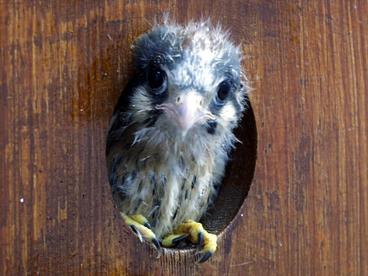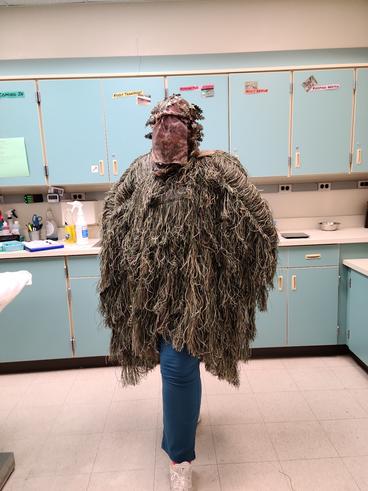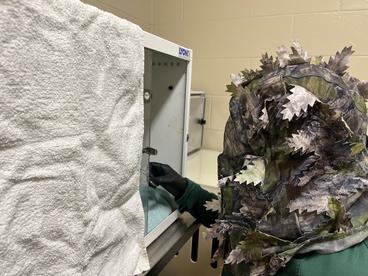
Wildlife rehabilitators across the world are fortunate to work with many incredible species. As advocates for these animals, their utmost goal is to keep patients wild and return them back to nature. To that end, one of The Raptor Center’s (TRC) main objectives is to reunite a nestling raptor with its original family or a wild foster family as soon as possible.
However, during the busy “baby season” (spring through summer), TRC receives numerous youngsters requiring medical care for a period of time before they can be reunited, fostered in a new nest, or released.

Staff members try to house these youngsters with members of their species and limit human interaction to avoid imprinting — a process in which young raptors learn by assessing their environment and establishing a bond with what they perceive to be their parents. If they become accustomed to human activity, these animals may lose their innate fear of humans. Being wary of humans is essential for wildlife to thrive.
To prevent young patients from forming bonds with their human caretakers, they are kept away from certain sounds and sights. First, youngsters are housed separately from TRC’s main hospital ward. Second, staff do not talk around babies and do not engage in eye contact with these raptor patients.
To block any human noise that might drift into the baby room, white-noise machines play natural sounds. As an extra precaution, staff members cover as much skin as possible when working around impressionable youngsters, often utilizing ghillie suits, face coverings, and gloves. The goal is to be unrecognizable—they don’t want to look human.

To block any human noise that might drift into the baby room, white-noise machines play natural sounds. As an extra precaution, staff members cover as much skin as possible when working around impressionable youngsters, often utilizing ghillie suits, face coverings, and gloves. The goal is to be unrecognizable—they don’t want to look human.